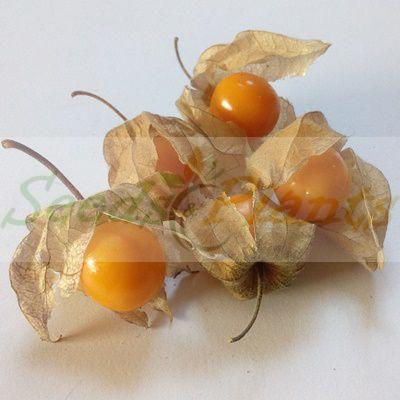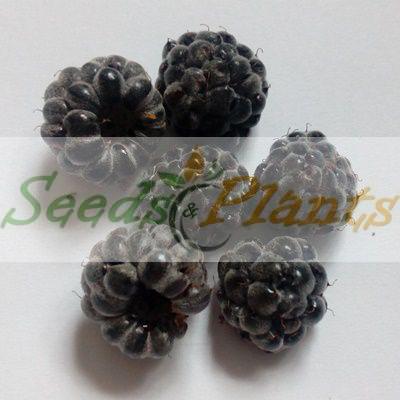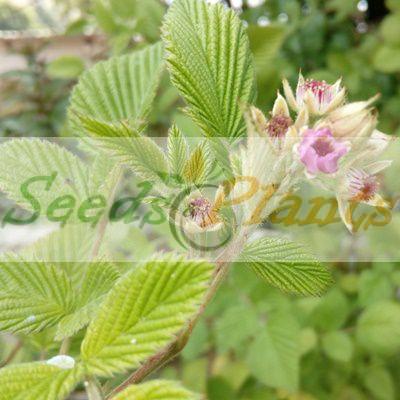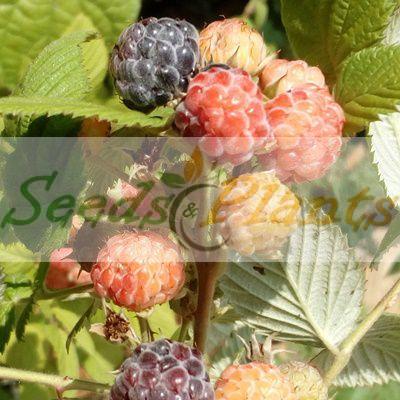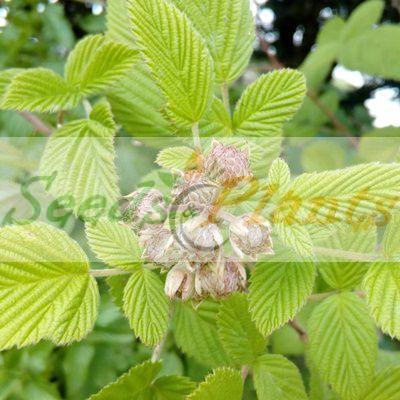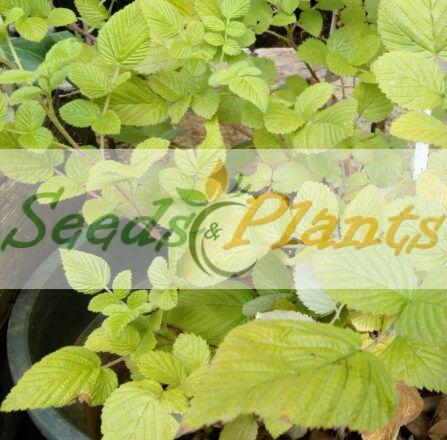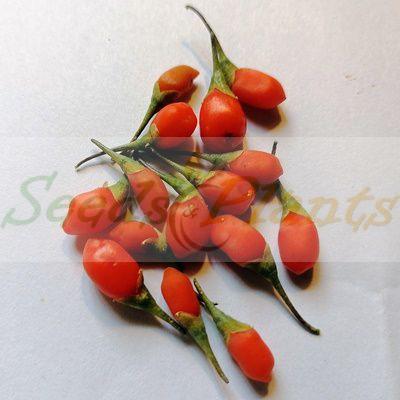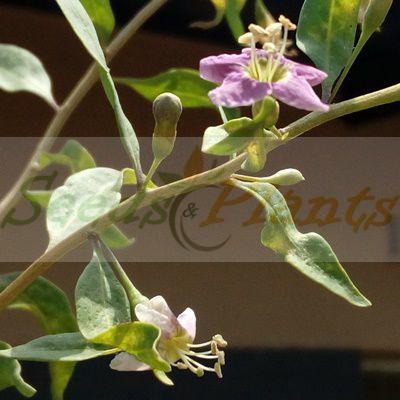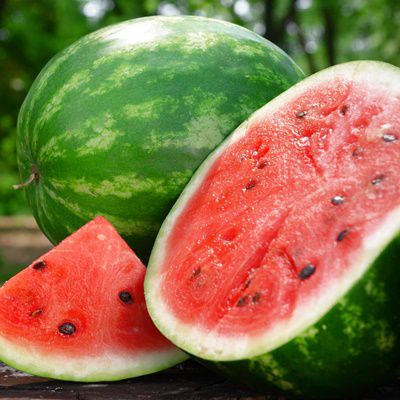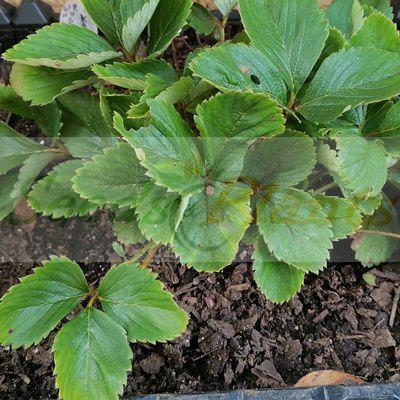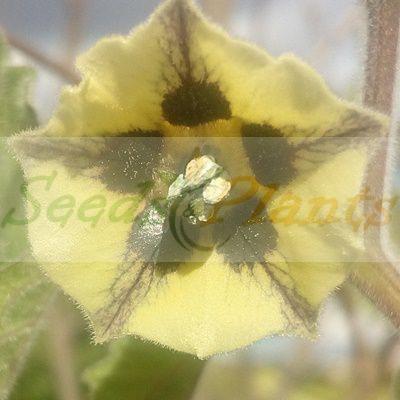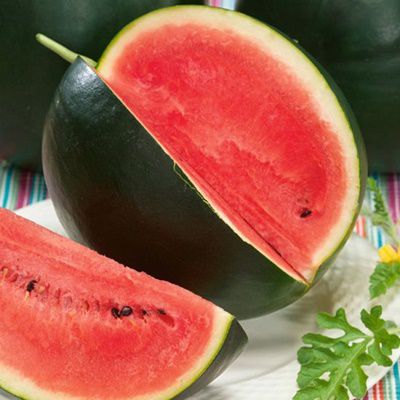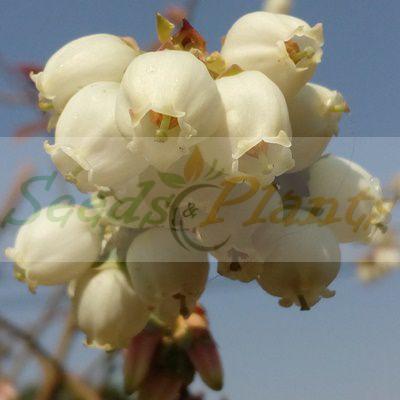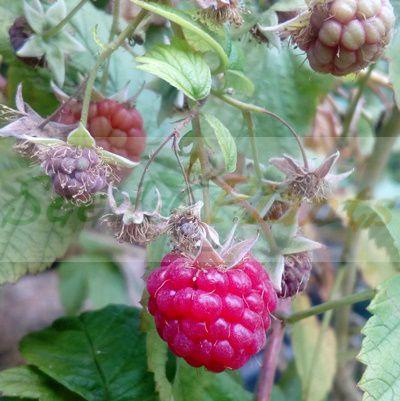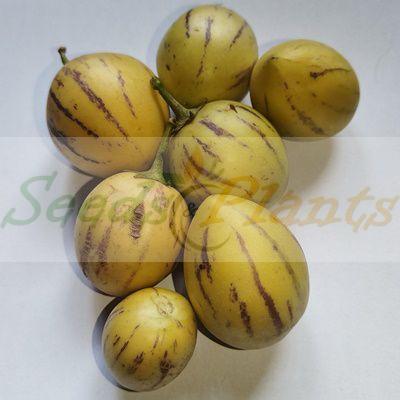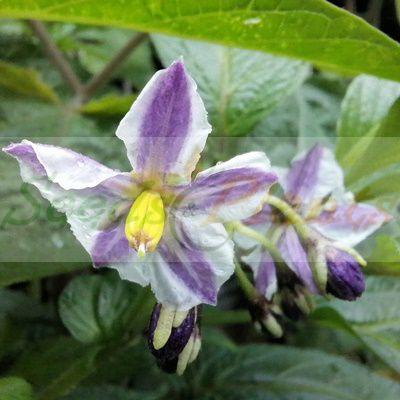🍒 Fruit Quick Facts
Fruit Info
- 🌍 Origin / Region: South Asia
- 🍽️ Culinary Use: Beverages/Teas, Canning, Cooked / Baked / Dried fruit, Cooked greens, Jams and Jellies, Pies and tarts
- 🥗 Edible Part: Berry, Leaf, shoot tips
- 😋 Flavor Profile: Sweet
Growth Traits
- 🌱 Life Cycle: Perennial
- 🌾 Plant Type: Shrub
- 🔁 Fruiting Needs: Needs Only 1 Plant
- 🪴 Growth Habit: Bramble, Rhizomatous, Scrambling, Sprawling, Tall Growing, Upright
- 🌸 Flower Color: Dark Pink
- 🌿 Foliage Type: Deciduous
- 📏 Mature Height: 1.5–2m
- 🦋 Pollinator Method: Attracts Bees, Attracts Butterflies, Attracts Hoverflies, Attracts Wasps, Self-pollinating
Growing Requirements
- 🌞 Sun Exposure: Full Sun, Partial Shade
- 💧 Water Needs: Avoid Overwatering, Regular Water
- ☀️ Growing Conditions: Frost Sensitive, Heat Tolerant, Not Cold Tolerant, Not Drought Tolerant
- 🟤 Soil Preference: Light, Loose, Rich Organic, Sandy loam, Tolerant of most soils, Well-Drained
Black Raspberry – 20 Seeds
(Rubus niveus)
R30.00
Black raspberry is not to be confused with blackberry. Black raspberry is delicate and plush with a velvety skin like its red counterpart.
Seed Type: Organic – Harvested from our own plants.
Indoor Sowing: Cold Stratification and then transplant once big enough.
Direct Sowing: Autumn and Early Winter.
In stock
🍒 Fruit Quick Facts
Fruit Info
- 🌍 Origin / Region: South Asia
- 🍽️ Culinary Use: Beverages/Teas, Canning, Cooked / Baked / Dried fruit, Cooked greens, Jams and Jellies, Pies and tarts
- 🥗 Edible Part: Berry, Leaf, shoot tips
- 😋 Flavor Profile: Sweet
Growth Traits
- 🌱 Life Cycle: Perennial
- 🌾 Plant Type: Shrub
- 🔁 Fruiting Needs: Needs Only 1 Plant
- 🪴 Growth Habit: Bramble, Rhizomatous, Scrambling, Sprawling, Tall Growing, Upright
- 🌸 Flower Color: Dark Pink
- 🌿 Foliage Type: Deciduous
- 📏 Mature Height: 1.5–2m
- 🦋 Pollinator Method: Attracts Bees, Attracts Butterflies, Attracts Hoverflies, Attracts Wasps, Self-pollinating
Growing Requirements
- 🌞 Sun Exposure: Full Sun, Partial Shade
- 💧 Water Needs: Avoid Overwatering, Regular Water
- ☀️ Growing Conditions: Frost Sensitive, Heat Tolerant, Not Cold Tolerant, Not Drought Tolerant
- 🟤 Soil Preference: Light, Loose, Rich Organic, Sandy loam, Tolerant of most soils, Well-Drained
Black Raspberry (Rubus niveus) is not to be confused with blackberry. Because it belongs to the Idaeobatus subgenus, its fruit has a hollow core when picked (like a raspberry), distinguishing it botanically from the blackberries that belong to the Eubatus subgenus. Blackberries are typically larger, shiny and firmer. Black raspberry is delicate and plush with a velvety skin like its red counterpart. Black raspberries can be used in the same ways as red raspberry, although they are a bit more popular for canning than red raspberries.
Common Names: Mysore raspberry, Ceylon raspberry, hill raspberry.
It is native to southern Asia, from Afghanistan east through India and China to Taiwan and the Philippines, south to Sri Lanka and Malaysia, and north to Gansu in China.
It is a shrub growing 1 to 2.5 m tall. The stems are whitish tomentose at first, becoming glabrous green to purple later. The stems (canes) are biennial, erect to arching, often scrambling and have curved sharp thorns. Immature canes are unbranched and have a whitish bloom. They only produce leaves, and do not flower, in their first year of growth, forming flowering branches in their second year. The leaves are pinnate with 5 to 11 leaflets (mostly 7 or 9). The leaflets are 2.5 to 8 cm long and 1 to 4 cm broad, dark green above, densely pale grey to white tomentose beneath.
The flowers are about 1 cm diameter, with five dark pink to red petals. The fruit is 8 to 12 mm in diameter, densely grey tomentose, dark red at first, ripening to black. Long stems also called canes, can grow up to 2.5m in length, usually forming an arch shape, but sometimes upright.The stems are notably glaucous (bluish white) and are smoothly round-shaped (nearly circular in diameter). When the stem surface is scratched, the underlying surface is a reddish maroon color. Canes have curved sharp thorns, while immature canes are unbranched and have a whitish bloom.
The plant can grow to a height of up to 2.5m or more, if not pruned. It is advisable to grow this plant in a large container with some form of support such as a trellis or a tomato cage.
Growing Black Raspberry
Indoor Sowing: Cold Stratification and then transplant seedlings once big enough.
Direct Sowing: Autumn and Early Winter.
- To plant raspberries from seeds, direct sow the seeds in a plastic peat pot starting in autumn to early winter.
- The seeds need a period of cold stratification to break dormancy. This naturally occurs outdoors if you plant the seeds in the garden in Autumn or winter.
- If you want to start raspberry seeds indoors, you must simulate the cold stratification process before planting.
- Soak the raspberry seeds in room temperature water for 24 hours.
- Place the seeds in a resealable plastic bag along with a handful of damp peat moss. Seal the bag, and place in a refrigerator.
- Keep the seeds chilled for 12 to 16 weeks.
- Fill seed trays with seed starter soil, and spread the raspberry seeds on top of the soil.
- Lightly cover the seeds with soil, and place in a warm area.
- Plant the raspberry seedlings outdoors the following spring.
- For Direct sowing in Autumn or Early Winter, press one to two Raspberry Seeds ¼ inch down into the soil of a container. Pat the soil down gently over the seeds to remove air pockets.
- Mist the soil lightly to dampen, using a spray bottle filled with water. Keep the soil moist throughout the germination process.
- The seeds will begin to sprout within three months.
- Set the container in an area that receives bright, indirect sunlight once the seeds begin to sprout.
- Continue to keep the soil moist and provide the raspberry plants with adequate light as they continue to grow.
- Transplant the raspberry plants outdoors in the spring, as soon as the soil is workable.
- Select an area for transplanting your raspberries that contains full sun and well-drained soil with a pH between 5.5 and 6.5.
- Raspberries can also be successfully grown in containers.
Can this plant be used for culinary purposes?
Black Raspberry is traditionally used for culinary purposes such as beverages/teas and canning.
Disclaimer
Medicinal Information:
All medicinal information on this website is for educational and informational purposes only and may not be construed as medical advice. The information is not intended to replace medical advice or treatment offered by healthcare professionals.
Seeds, Plants, Plant Cuttings, Geophytes and Dried Herbs:
In some countries and provinces, certain plants are deemed as invasive and are not allowed to be planted at all, whilst some plants are allowed to be grown only in certain areas or provinces. The onus is on you as the buyer to familiarize yourself with the regulations pertaining to your location, before purchasing any of our seeds, plants, plant cuttings, geophytes or dried herbs. We will not be held liable, should you purchase any seeds, plants, plant cuttings, geophytes or dried herbs. from us which are prohibited in your country or province.

